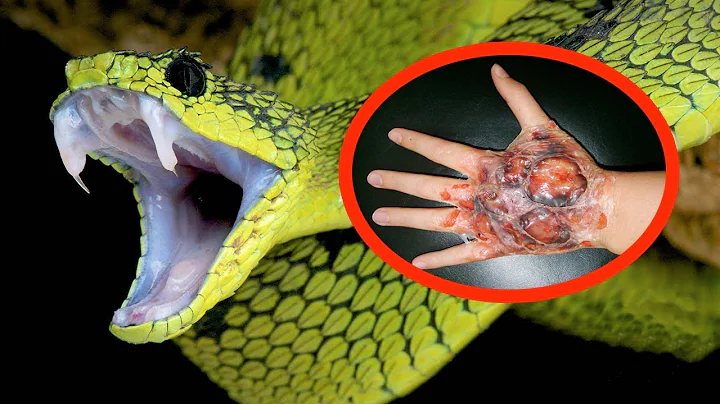In nature, food is hard to come by, and after all, some forms of prey have developed pretty formidable defense techniques to avoid becoming dinner for predators. However, there are also some hardy animals in nature that don't care at all about poisonous or spiky creatures, and they survive by eating these foods. Today, Jerry compiled five species of animals that have evolved to eat deadly food.
Turtles that eat jellyfishTurtles

Turtles may be one of the cutest animals in the ocean, but they also have a very dangerous way of eating. Leatherback turtles found in the Atlantic, Pacific and Indian oceans often eat jellyfish and even occasionally eat marine animals including box jellyfish, which have some of the most powerful venom in the animal kingdom. Most of the tentacles in a box jellyfish are covered in tiny cells filled with toxins, and any fish that comes into contact with the deadly tentacles are usually instantly knocked unconscious and eventually eaten. The sting of a box jellyfish can cause severe pain at the point of contact, leading to a drop in blood pressure, difficulty breathing, and even a heart attack.
Leatherback turtles don't have to worry about these problems because their skin is thick enough to protect them, especially around their mouths and shells. These turtles are able to chew on jellyfish without fear of being harmed by any waving tentacles. And, during the feeding process, hundreds of small spine-like projections line everything from the turtle's throat to its intestines. They help catch the jellyfish and provide an extra cushion in the turtle's esophagus to protect against multiple stings. So, for them, eating jellyfish is like eating jelly.
Limestone-gnawing worms

A new species of worm mollusk has been discovered in the Philippines and it is called shipworm. It has a very strange characteristic, typically ranging from 20cm to 46cm in length, and is known for chewing up wood in the water, causing some serious trouble for sailors. In 1503, these pesky molluscs chewed up and sank at least two ships as Christopher Columbus ventured to the Americas.
But incredibly, the newly discovered shipworm gnaws on something even more difficult to digest than wood. Their staple food is limestone. Given how hard the rocks are, humans simply cannot eat them, causing indigestion, choking and cuts as they slide down your throat. Of course, other animals also swallow rocks to aid digestion. Some birds, such as ostriches, swallow rocks and store them in a part of their stomach called the gizzard. The muscular stomach contracts, grinding the rocks into contact with the stomach contents to break down the food. This is how birds make up for missing teeth. Birds can't actually digest rocks, but even those that can break down limestone can be very dangerous.
Limestone is composed of calcium carbonate. Calcium carbonate is a compound that, if consumed in large enough quantities, may cause stomach pain nausea and vomiting But strangely enough, shipworms not only burrow in limestone but also swallow them, these soft bodies The animals also have thousands of specially adapted flat teeth designed to help grind the limestone into digestible chunks before eventually expelling it as sand. However, no one knows why the worms do this, as they don't seem to get any nutritional value from the limestone, but rather from the bacteria found in it.
The bone-eating vulture

The bearded vulture found across southern Europe, Africa, and West Asia has a diet consisting of 70 to 90 percent bones. Especially the bone marrow inside because it has a high fat content. They learned to carry large bones up to dizzying heights of 150 meters, then dropped them onto the rocks below, where they extracted nutrient-rich marrow from the bone fragments. What's more, these vultures can even swallow bones whole. You know, almost all other animals can't digest these bones.
Fortunately, these birds have evolved stomach acid with a pH of 0.7, which not only helps dissolve bones but also protects these birds and other vultures from harmful bacteria such as Salmonella . Salmonella is found by vultures on decaying animal carcasses, and vultures scavenge these harmful bacteria. For other animals, swallowing bones not only risks choking, but also risks puncturing internal organs. But the bearded vulture's elastic throat can stretch to help swallow debris of all shapes and sizes. The lining of their throats is also thicker than that of other animals, protecting them from puncture by sharp edges.
Giraffes chewing bones

Giraffes Although typically herbivores, giraffes also feed on carcasses, providing their diet with calcium and phosphorus to grow and strengthen their massive skeletons. These seemingly hardcore African mammals actually Instead of swallowing them, they chew and lick the bones, using their saliva to dissolve all the nutrients they need. In addition to this, giraffes have another terrible way of eating, which is to eat the deadly acacia tree.
Over time, the trees have developed a powerful defense in an attempt to stop animals from eating the leaves on them. The sharp thorns on the trees can be 10cm long, so most animals will stay away, but giraffes have a reliable solution. Using thick lips and a long, flexible tongue coated with sticky protective saliva, giraffes can remove most of the sharp spines from branches before chewing them. The tree releases bitter-tasting tannins when eaten, which can bind to the digestive enzyme and affect the animal's ability to obtain nutrients from food. In 1990, 3,000 antelopes died in South Africa after eating the leaves of this tree. But giraffes are not afraid because their saliva contains tannin-binding proteins, which effectively neutralize the toxic effects of tannins.
Camels eating cactus

Whether it is the heat or the lack of food and water, in the desert, only the toughest animals can survive, and the camels in the desert have strong survival skills. Not only are they able to withstand the brutal rays of the desert sun, but they have evolved to eat impossible foods there. Camels can eat prickly prickly pear cactus without being harmed. Considering that cactus spines can be up to 15 centimeters long, most animals will stay away from it.
But camels are well-suited to dealing with this prickly plant. Their mouths are covered with cone-shaped raised structures, somewhat similar to leatherback turtles. These raised structures are elastic and flexible and can prevent most cacti. The spines pierce the soft parts of their mouths. The camel will position them to the side of its mouth rather than trying to swallow them directly, making the sharp spines easier to handle and swallow.
![PHILOSOPHY - Ethics: Killing Animals for Food [HD] - DayDayNews](https://i.ytimg.com/vi/3HAMk_ZYO7g/hq720.jpg?sqp=-oaymwEcCNAFEJQDSFXyq4qpAw4IARUAAIhCGAFwAcABBg==&rs=AOn4CLBQZaybrc7iZEDiXFJCheVKQHFNvg)
![PHILOSOPHY - Ethics: Killing Animals for Food [HD] - DayDayNews](https://cdn-dd.daydaynews.cc/img/play.svg)



















